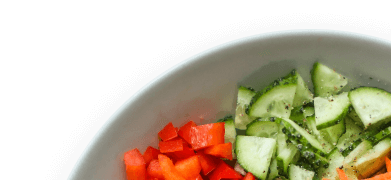Developing an allergy policy and allergy action plans
For children with a known food allergy, the key to preventing a potentially serious reaction is avoiding exposure to the relevant allergen (the food that causes the allergy).

It is important for centres to develop and implement an allergy policy to reduce the risk of allergen exposure as much as possible and practicable. The allergy policy should also include requirements for staff training regarding anaphylaxis and use of adrenaline injectors.
Important points to include in a food allergy policy:
- Sharing food, containers and utensils should not be allowed. This is especially important if food and utensils (e.g. lunchboxes and drink bottles) are brought from home.
- Bottles, lunchboxes, other utensils and other drinks provided by parents should be clearly labelled with the name of the child for whom they are intended.
- Eating areas and utensils should be thoroughly cleaned with warm soapy water. Utensils should be put through a dishwasher cycle if appropriate, to remove traces of potential allergens.
- Children and staff should be encouraged to wash their hands before and after meal times.
- Bench tops should be wiped down before and after meal times.
- For some children it may be necessary to have food and drinks checked by parents. For severely allergic children it may be preferable to have parents provide meals prepared at home.
- Food should only be avoided following recommendation by the child’s medical specialist and the provision of documentation supporting this recommendation.
- Food preparation staff should be instructed about necessary measures to prevent cross-contamination during handling, preparation and serving of food.
- Ongoing training and education for educators about food allergy management, anaphylaxis and use of adrenaline injectors should be available.
- Materials such as cow’s milk cartons, egg cartons and cereal and other food boxes should be clean and free from contamination before using for art and craft activities.
Educators should be made aware of the risk to an identified child of using allergenic foods in cooking activities (e.g. baking cakes, frying eggs).
Use of food in crafts, cooking classes and special activities may need to be restricted depending on the allergies of particular children. Often, an appropriate alternative ingredient can be substituted (e.g. wheat-free flour for playdough or cooking).
Food removal from early childhood services
To prevent accidental exposure to an allergenic food, some children’s services have developed policies to exclude certain foods from the centre. However, many of these foods make up an important part of the diet, and excluding these foods without appropriate replacements can lead to nutritional deficiencies. It is not recommended that foods be excluded from the service unless under health professional supervision (e.g. GP, paediatrician, allergist or dietitian).
If it is necessary for certain foods to be excluded from the service, parents of all children should be asked not to send these foods in lunchboxes or for celebrations and other occasions when food might be shared.
It should be made clear to parents and staff that although allergen avoidance policies are designed to reduce the risk of exposure, it is never possible to achieve a completely allergen-free environment in any service that is open to the general community.
Anaphylaxis prevention
The Australasian Society of Clinical Immunology and Allergy (ASCIA) outlines four steps to prevent anaphylaxis in preschool and childcare services.
Step 1: Obtaining medical information about children at risk of anaphylaxis by the pre-school or childcare personnel
Centres should request information about allergies from parents upon enrolment. Documentation from a health professional (e.g. paediatrician) should be provided to support this.
All children with food allergy should have a current ASCIA Action Plan for Anaphylaxis or an ASCIA Action Plan for Allergic Reactions (see below). These should be updated by the child’s medical practitioner every 12 months.
Staff should meet with parents/guardians of children with allergies to discuss risk minimisation strategies.
Step 2: Staff training about how to recognise and respond to a mild, moderate or severe allergic reaction, including training in the use of adrenaline autoinjector devices
All staff should be trained in identifying, managing and preventing allergic responses every 1–2 years.
If face-to-face training is unavailable, or if refresher training is required, staff can access the e-training from the Australasian Society of Clinical Immunology and Allergy. This training program provides ready access to accurate and consistent education about the recognition, emergency treatment and risk minimisation of anaphylaxis.
The course is free and each session takes approximately 1 hour to complete. A certificate can be printed upon successful completion of the course. For more information and to access the training program visit http://www.allergy.org.au/patients/anaphylaxis-e-training-schools-and-childcare.
Note: e-training should be completed in conjunction with regular practice using adrenaline autoinjector training devices (with no needle and no adrenaline). To order EpiPen® trainers email alphapharmss@alphapharm.com.au and to order Anapen® trainers email info@analert.com.
Step 3: Implementation of practical strategies to avoid exposure to medically confirmed allergens
Strategies should be put in place to reduce the risk of exposure to allergens. This is at the discretion of the centre.
This should include measures such as:
- having a separate pantry shelf for low allergy ingredients (e.g. wheat free flour)
- preparing low allergen meals first
- eliminating particular ingredients as required
- using clean/separate utensils and preparation surfaces
- having separate margarine/spreads for wheat free children (to reduce crumb contamination when spreading bread)
- having a separate toaster for wheat free/gluten free toast
- communicating with parents that the centre is caring for or educating a child with an allergy and request that the food which triggers the reaction is not brought into the centre.
More detail about the importance of these strategies is provided on each web page for the specific allergens – please see links at right.
Step 4: Age-appropriate education of children with severe allergies and their peers
It is primarily the responsibility of parents/guardians to teach allergic children to care for themselves. However, in childcare services and pre-schools, children are dependent on carers for providing a safe environment. It is important for all children to be educated about allergies and anaphylaxis and suitable risk minimisation strategies (e.g. washing hands after eating, not sharing food.).
ASCIA Action Plans for allergic reactions and anaphylaxis
On enrolment, centres should request written documentation of confirmed allergies from the child’s treating team (doctor, allergist, paediatrician). An ASCIA Action Plan should be provided by the parent/carer along with appropriate medication and an adrenaline autoinjector, if required.
The ASCIA Action Plan is a medical management document that is developed in collaboration with the child’s parents and prepared and signed by a medical practitioner. It includes the child’s name and photograph, confirmed allergies, symptoms of mild, moderate and severe reactions and clear instructions of action to take when an allergic reaction occurs.
The Australian Society of Clinical Immunology and Allergy (ASCIA) has developed the following action plan templates for individual use:
- ASCIA Action Plan For Allergic Reactions (for people with mild to moderate allergies who need to avoid certain allergens)
- ASCIA Action Plan For Anaphylaxis For Use With Epipen® Adrenaline Autoinjectors (for people with severe allergies, includes instructions on how to give EpiPen®)
- ASCIA Action Plan For Anaphylaxis For Use With Anapen® Adrenaline Autoinjectors (for people with severe allergies, includes instructions on how to give Anapen®).
These are medical documents that can only be completed and signed by the patient’s treating medical doctor and cannot be altered without their permission. The templates are available from http://www.allergy.org.au/health-professionals/anaphylaxis-resources/ascia-action-plan-for-anaphylaxis.
ASCIA Action Plans must be placed in an area that can be easily and quickly accessed when an emergency response is required. However, displaying the ASCIA Action Plan containing personal health information where it is readily visible may raise concerns about privacy. The location where allergy action plans will be displayed should be discussed with parents of identified children, and any concerns about privacy should be addressed.
A copy of an ASCIA Action Plan for anaphylaxis should also be kept with the EpiPen® or Anapen® at all times so that the plan is always at the scene of an emergency along with the medication.
References
Australasian Society of Clinical Immunology and Allergy http://www.allergy.org.au/
For more information please phone 1300 22 52 88 or email heas@nnf.org.au
Except where otherwise indicated, the images in this document show models and illustrative settings only, and do not necessarily depict actual services, facilities or recipients of services. This document may contain images of deceased Aboriginal and Torres Strait Islander peoples. In this document, ‘Aboriginal’ refers to both Aboriginal and Torres Strait Islander people. ‘Indigenous’ or ‘Koori/Koorie’ is retained when part of the title of a report, program or quotation. Copyright © State of Victoria 2016
Written and reviewed by dietitians and nutritionists at National Nutrition Foundation, with support from the Victorian Government.

Featured recipes
Explore all recipes


Register your interest
"*" indicates required fields










